Poverty

"Especially in this day and age, we already are living in tough times…I’ve seen people looking to things like film and television as a means of escape, so I have to acknowledge that people are spending their hard-earned money to go to a movie on a Friday night and want some sort of escape....My hope is that along with getting that escape, they will be positively motivated," says the filmmaker.
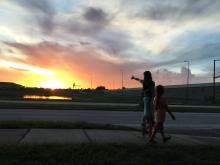
Orlando, Fla. is most known for the Walt Disney World theme parks that draw millions of visitors to the area each year. Yet few realize that the discount hotels they drive past on their way to the parks are occupied not by tourists, but by the homeless. They’re who The Florida Project director Sean Baker refers to as the “hidden homeless,” as they live, mostly unnoticed, at the fringes of the billion dollar resort. In The Florida Project, their stories find a platform.
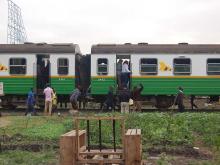
Starting in the suburb of Ruiru, about 19 miles north of Nairobi, the train for the past five years has informally hosted a growing number of self-styled pastors and a makeshift, moving congregation eager to hear the gospel.
At least two coaches turn into “churches” each day, with Christians singing, dancing, and clapping as they prepare for a short sermon during the one-hour journey.
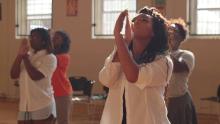
It’s a powerful setup, and the girls’ (and their team’s) journeys are inspiring. But it’s hard to shake the feeling that Lipitz is more concerned with crafting a tidy, three-act narrative than with taking an honest look at who these girls are, and the issues they face.

Everyone deserves our love, especially those whom the “religious” people deem unworthy — tax collectors, Samaritans, lepers, the homeless, the beggars, the sick, the mentally ill, the despairing.

More than 700 people from 16 states rallied Wednesday at a Capitol Hill church to oppose the Trump administration’s proposed $6.2 billion cut to federal housing programs. Protesters held signs while shouting, “Housing is our right,” “Stop selling our neighborhoods to Wall Street,” and “No cuts to housing.”
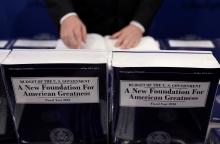
Several years ago, Sojourners asked that question, leading a campaign to remind our leaders in Washington that: “A budget is a moral document. Our faith tells us that the moral test of a society is how it treats the poor. As a country, we face difficult choices, but whether or not we defend vulnerable people should not be one of them.” As we look at the priorities outlined in the Trump administration’s 2018 budget released today, it’s worth asking again: What would Jesus cut?

We are living in a time of unprecedented economic disparity between the rich and the poor, the haves and the have-nots. Masses live in poverty so that a handful of people can live as they wish. The world’s three richest people own more than the combined economies of 48 countries. The average CEO in the US is making 400 times the average worker.
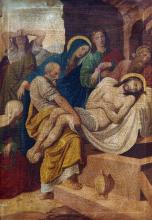
In the midst of so much death, how can we Christians celebrate Easter?
These questions can be paired with questions regarding our own sense of worship on that day. How much have we Christians replaced justice with worship, not taking one into serious relation with the other? Are we accustomed to worship in the total absence of justice?

Poverty is not inevitable. It is a systemic sin, and all Christians have a responsibility to partner with the poor to end poverty once and for all. “The poor you will always have with you” is actually one of the strongest biblical mandates to end poverty. Matthew 26:11 quotes Deuteronomy 15, one of the most liberating Sabbath prescriptions in the Bible, and an instruction on how to follow God’s commandments to end poverty, forgive debts, and release slaves.

If I’ve learned anything since my time in Rome, it’s that people — not just Catholics — are hungering to connect peace with justice. This is why those of us who traveled to Rome just before the election, accompanied by Stockton, Calif., Bishop Stephen Blaire, and Houma-Thibodaux, La., Bishop Shelton Fabre, are preparing for a regional WMPM meeting in Modesto, Calif., in February.
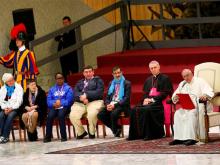
Pope Francis on [Nov. 11] made a surprise visit to meet several men who took the controversial step of leaving the priesthood and starting a family.
A Vatican statement said the pope left his residence in the afternoon and traveled to an apartment on the outskirts of Rome, where he met seven men who had left the priesthood in recent years. The pontiff also met their families.

A common misconception is that to be a pro-life Catholic, one simply has to be anti-abortion and anti-contraception. For years this “pro-life” definition has largely been unchallenged. That is, until recently.
A poll conducted in 2014 by the Public Religion Research Institute found a majority U.S. Catholics favor greater government involvement on economic issues via minimum wage increases, infrastructure investments, and universal healthcare. Furthermore, U.S. Catholics believe that to promote economic growth, the government should raise taxes. These aren’t just pro-growth policies, they’re pro-life policies.
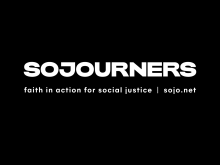
Harper’s account of the Gospel in her new book is shalom-based. Drawing deeply from a theme that runs through the Bible but is especially strong in the Hebrew prophets, Harper tells a story of a God who acts in Jesus Christ to bring shalom, or holistic peace and justice, in every part of creation.

For the nation’s 50 million public school students, another school year is about to begin. Are they ready? Even if they get new backpacks, notebooks, and pencils, most of our students are not prepared to do the schoolwork expected of them.
Two out of three American eighth graders can neither read nor do math at grade level. Schools serving low-income communities perform particularly poorly on a whole range of measurable outcomes including language, reading, and mathematics — critical skills for performing well and succeeding in society.

TWENTY YEARS AGO, President Bill Clinton promised to “end welfare as we know it” by signing into law the Personal Responsibility and Work Opportunity Reconciliation Act, otherwise known as “welfare reform.”
Controversial at the time, the law placed a five-year time limit on government financial assistance to those in need and instituted work requirements for welfare recipients. With two decades of hindsight, there is now sufficient evidence to evaluate its effectiveness, the holes it created in our nation’s social safety net, and what needs to be done to address them.
One of the best examinations of this law’s effects is the insightful book $2.00 a Day: Living on Almost Nothing in America. Scholars Kathryn J. Edin and H. Luke Shaefer note that welfare reform has succeeded in important ways. “Poor single mothers,” they write, “left welfare and went to work in numbers that virtually no one expected. In 1993, 58 percent of low-income single mothers were employed. By 2000, nearly 75 percent were working, an unprecedented increase.” While the Great Recession reversed some of this progress, the employment rates remain “above pre-reform levels.” Child poverty rates also fell after welfare reform’s passage and remain down, though the authors note that additional measures, such as the expansion of the Earned Income Tax Credit and increased government spending on child-care programs, also factor into this decline.
But the outcomes are not universally positive. In the first 15 years after passing welfare reform, the number of people living in “$2-a-day poverty” had more than doubled.

The geography of poverty and its proximity to such opulence is one of the oddities of the city. Juxtaposed against the seeming wealth of the church, a community has formed — they live, literally, on the margins of this great structure. The church allows it. That the city frowns upon it is another story.

FOR IMMEDIATE RELEASE
Contact: Michael Mershon, Director of Advocacy and Communications
Phone: 202-745-4654
Email: mmershon@sojo.net
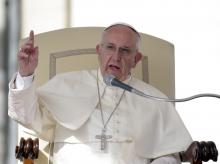
Pope Francis has blasted employers who do not provide health care as bloodsucking leeches and he also took aim at the popular “theology of prosperity” in a pointed sermon on the dangers of wealth.
Speaker of the House Paul Ryan has said repeatedly that he isn’t running for president, but that hasn’t stopped him from making numerous public appearances to talk about his vision for the Republican Party and the United States.